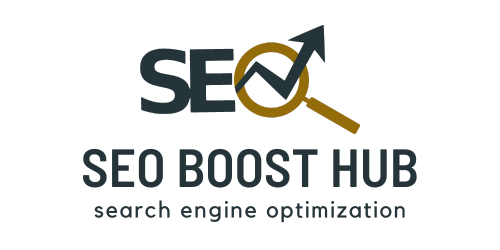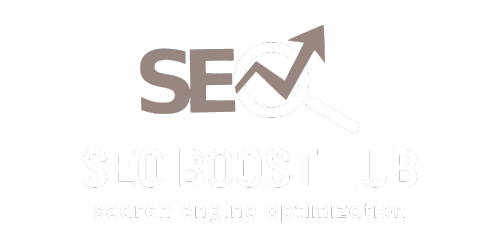ABM Content Strategy: How to Create Targeted Content for Account-Based Marketing
Account-Based Marketing (ABM) is a strategic approach that focuses on targeting specific high-value accounts with personalized marketing efforts. One of the most critical elements of a successful ABM campaign is an effective ABM content strategy. By delivering highly tailored content to key accounts, businesses can increase engagement, build stronger relationships, and drive conversions.
In this article, we’ll explore what an ABM content strategy is, why it’s essential for your marketing efforts, and how to create a personalized content plan that resonates with your target accounts.
What is an ABM Content Strategy?
An ABM content strategy is a customized approach to content creation and distribution that focuses on delivering personalized messages and solutions to specific accounts or prospects. Unlike traditional inbound marketing, which casts a wide net to attract potential customers, ABM is highly targeted and aligned with the unique needs and pain points of select high-value accounts.
A strong ABM content strategy leverages tailored content to:
- Address the specific challenges of individual accounts.
- Provide solutions that speak directly to the decision-makers at these accounts.
- Align marketing efforts with sales teams to drive revenue growth.
The goal is to create highly relevant and engaging content that appeals to each account’s business objectives, making your messaging more impactful and increasing the chances of conversion.
Why an ABM Content Strategy is Important
ABM has become a powerful tool for B2B marketers, and having a tailored content strategy is critical to its success. Here’s why an ABM content strategy is essential:
- Personalization Drives Engagement: Personalized content shows that you understand your target account’s unique needs and challenges. This relevance fosters deeper engagement and helps you stand out from competitors.
- Alignment with Sales: An ABM content strategy ensures that marketing and sales teams are aligned on goals, messaging, and outreach efforts. This alignment helps create a seamless buyer journey.
- Efficient Use of Resources: Instead of targeting a broad audience, ABM focuses resources on key accounts that are most likely to generate revenue, maximizing the impact of your content efforts.
- Higher ROI: Since ABM focuses on high-value accounts, it typically yields higher returns on investment (ROI) compared to broader marketing strategies.
How to Create an Effective ABM Content Strategy
To develop an ABM content strategy that resonates with your target accounts, follow these key steps:
1. Identify and Segment Target Accounts
The first step in creating an ABM content strategy is to identify the high-value accounts that are most likely to convert. Work closely with your sales team to determine which accounts to target based on criteria such as:
- Revenue potential
- Industry or vertical
- Current relationship status
- Company size
Once you’ve identified your target accounts, segment them based on their specific needs, pain points, or goals. This segmentation will help you tailor your content to each group more effectively.
2. Conduct In-Depth Account Research
Before creating content, conduct thorough research on each target account. Understand their business challenges, goals, and industry trends. This research allows you to create content that speaks directly to their unique situation.
Here are some key areas to research:
- Company background and financial status
- Key decision-makers and stakeholders
- Competitors and industry challenges
- Current initiatives and goals
This level of detail ensures that your content is personalized and relevant, increasing the likelihood of engagement.
3. Develop Account-Specific Content
Once you have a deep understanding of your target accounts, you can start creating account-specific content that addresses their pain points, answers their questions, and offers solutions tailored to their needs.
Types of content you can create for ABM include:
- Personalized case studies: Show how your product or service has helped similar companies in the same industry.
- Targeted blog posts: Write blog posts that address specific issues or challenges faced by the account.
- Whitepapers and eBooks: Offer in-depth resources that are relevant to their industry or challenges.
- Video content: Use videos to present tailored solutions or demos that speak directly to the decision-makers of the target account.
- Email campaigns: Design personalized email sequences that speak to the key pain points of each account and guide them through the buyer’s journey.
Each piece of content should be personalized to the account’s industry, goals, and challenges, making it more relevant and engaging.
4. Align Marketing and Sales Teams
For ABM content to be effective, it’s critical that marketing and sales teams are aligned. Both teams should collaborate on account selection, content creation, and outreach strategies to ensure that content addresses the right pain points and is delivered to the right stakeholders.
Sales teams can provide valuable insights into the challenges and concerns of specific accounts, while marketing can craft content that speaks to these challenges and helps move the account further down the sales funnel.
5. Distribute Content Across the Right Channels
Once your ABM content is created, the next step is to distribute it strategically across the most effective channels. Different accounts may engage with content on different platforms, so it’s important to choose the right distribution channels.
Effective ABM content distribution channels include:
- Email campaigns: Use personalized email campaigns to deliver tailored content directly to decision-makers.
- LinkedIn: Share account-specific content through LinkedIn messages or ads targeting key stakeholders.
- Direct mail: Send physical content, such as personalized reports or brochures, to key contacts.
- Account-specific landing pages: Create landing pages tailored to the needs of individual accounts, showcasing relevant content, case studies, and solutions.
By distributing content through the channels where your target accounts are most active, you increase the chances of engagement and conversion.
6. Measure and Optimize Your ABM Content
As with any marketing strategy, it’s essential to track and measure the performance of your ABM content. Key performance indicators (KPIs) for ABM content include:
- Engagement rates (e.g., email open rates, content downloads)
- Website traffic from targeted accounts
- Conversion rates for targeted accounts
- Sales cycle length for ABM-targeted accounts
- Return on investment (ROI)
Analyze the performance of your content and make adjustments as needed. For example, if certain types of content are driving higher engagement, consider producing more of that content. Similarly, if you find that certain channels are more effective, adjust your distribution strategy accordingly.
Best Practices for ABM Content Strategy
To ensure the success of your ABM content strategy, follow these best practices:
- Personalization is Key: The more personalized your content is, the more likely it will resonate with your target accounts.
- Consistency and Relevance: Regularly provide relevant content that addresses the evolving needs and challenges of your target accounts.
- Focus on Quality Over Quantity: ABM is about targeting a select group of high-value accounts, so focus on producing high-quality, in-depth content that offers real value.
- Collaborate with Sales: Sales teams have direct insights into target accounts, making their input invaluable for creating relevant content.












